NOMENCLATURE & CLASSIFICATION
MATECEL® is classified into pure and modified grades. Pure grades are also divided into HPMC(Hydroxypropyl Methyl Cellulose) and HEMC(Hydroxyethyl Methyl Cellulose).

PMK-150ZS(HPMC, Degree of subsituion K, Viscosity 150000mPa·s, Delayed Solubility)
GMK Grade
GMK grades are finely modified to improve the rheological properties of cellulose ethers in accordance with various application requirements such as additional thickening, betier workability, less stickiness, longer open time, etc.
Modified grades are especially produced through chemical reactions, physical blending of organic or inorganic additives. The viscosity range varies from under 400mPa·s to over 200,000mPa·s.
Classification
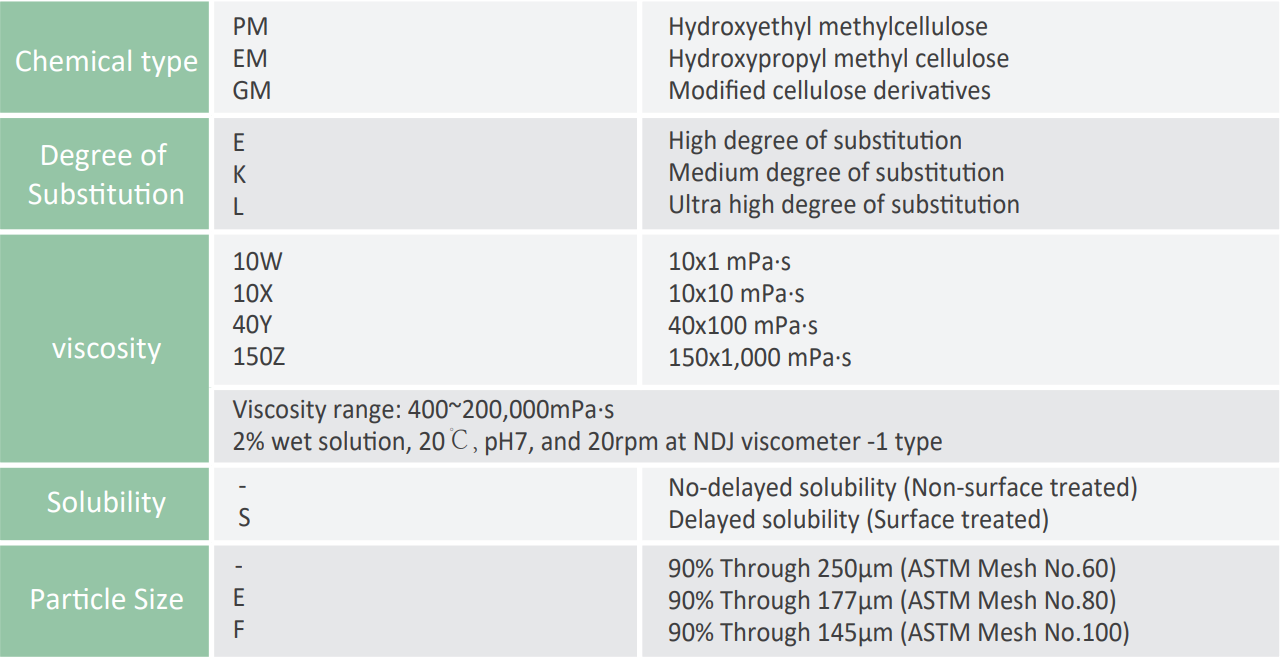
HOW TO PREPARE MATECEL® SOLUTIONS
Usually, non-surface treated MATECEL® can only be dispersed in hot water to prevent lumping, but surface treated MATECEL® can be dispersed in cold water.
In the meantime, have a look at the brief illustrations below to see the key differences.
Surface treated MATECEL®
Surface treated powder is specially developed to prevent lumping in wet blending applications such as paints and emulsion based applications. To
make the solution with surface treated powder, powder is directly placed into cold water. With time, a fully developed-solution with the appropriate
viscosity is prepared through continuous stirring of the solution.
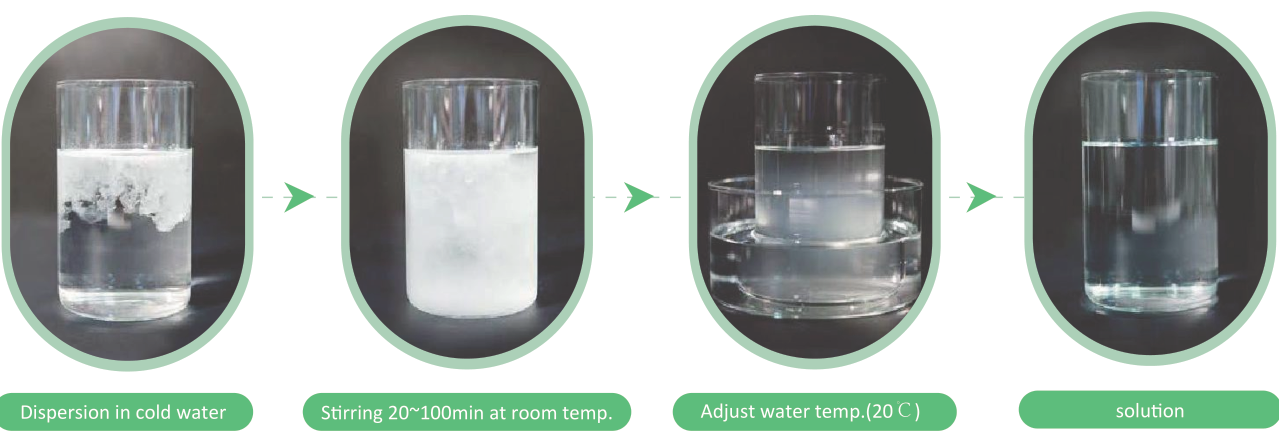

Non-surface treated MATECEL
If non-surface treated powder is put into cold water directly, it easily forms lumps due to its too quick solubility with cold water. To prevent lumping, put the powder into the hot water(over 90°C)first, then stir in order to disperse the powder, and then cool down the solution while stirring continuously.
When non-surface treated powder is used in a dry-mixing application, lumping is not a concern since each particle of MATECEL® is distributed throughout the final product evenly.
Adjustable Solubility Properties
Our HPMC products have adjustable solubility properties which vary from its degree of etherification.
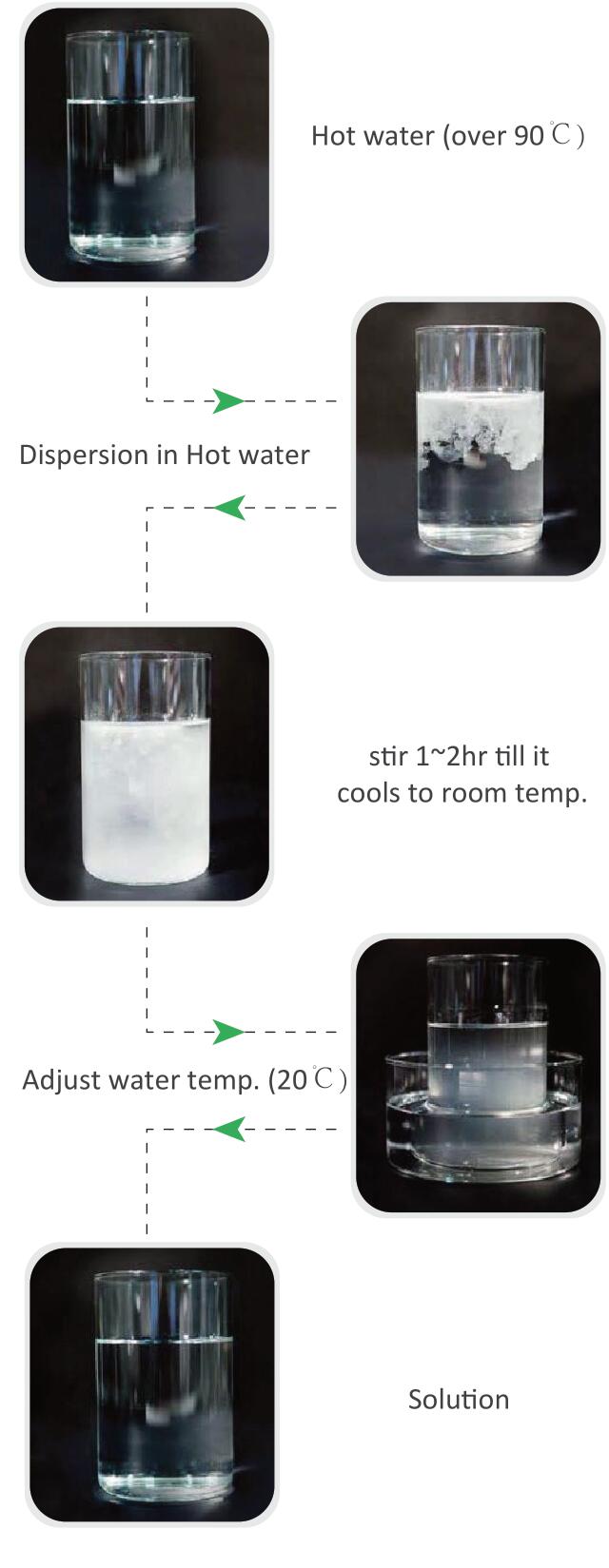
SOLUBILITY
Dissolution of MATECEL®
When it comes to water solubility levels and speed, the general dissolution mechanism of MATECEL® is shown in the graph below.
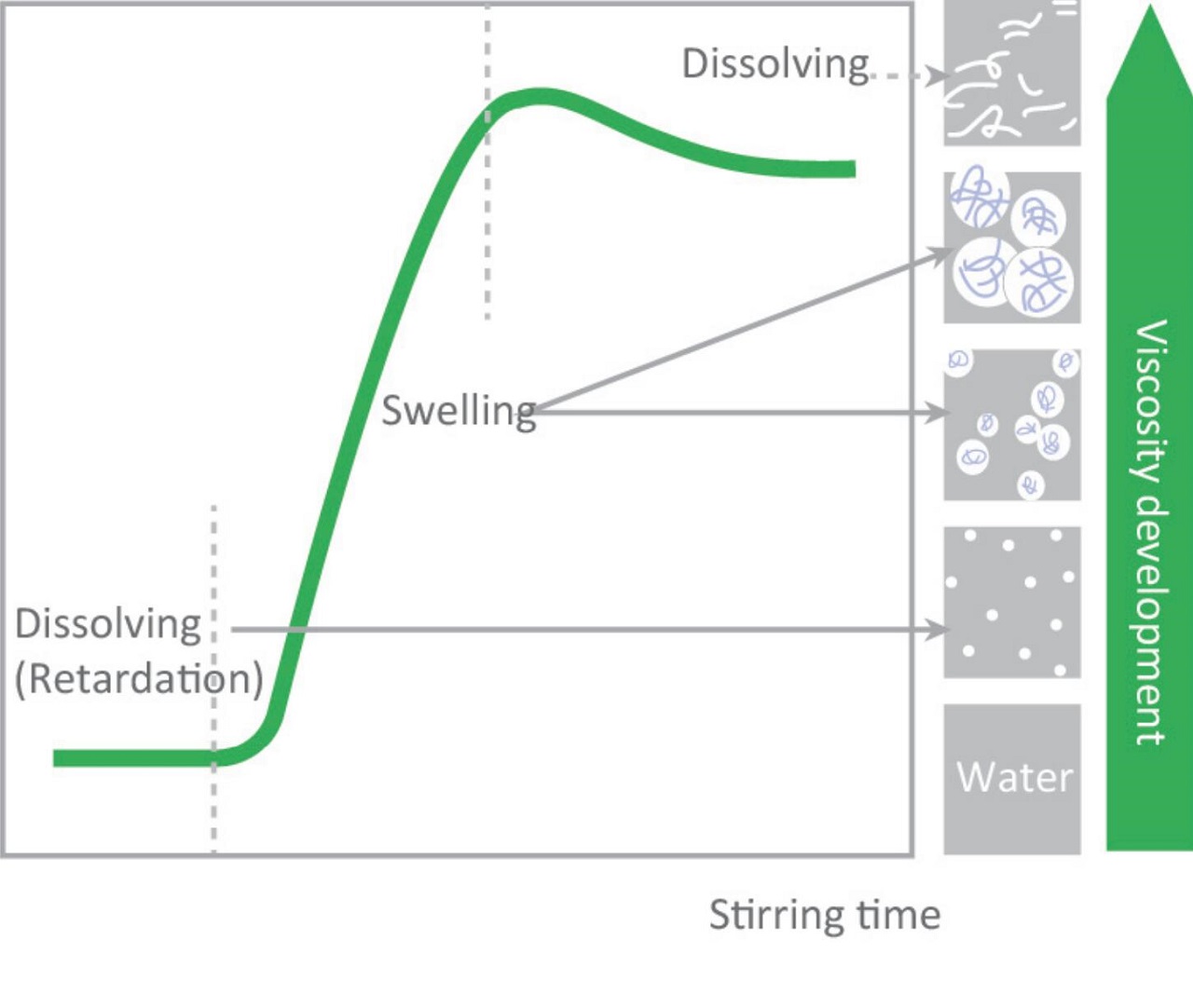
Non-surface treated MATECEL®
The viscosity measuring of non-surface treated MATECEL® is impossible in cold water due to lump formations. The retardation time of surface-treated MATECEL® Approximates to about 20 minutes at HP 7. However, the higher the PH of the solution is, the shorter the retardation time will be.
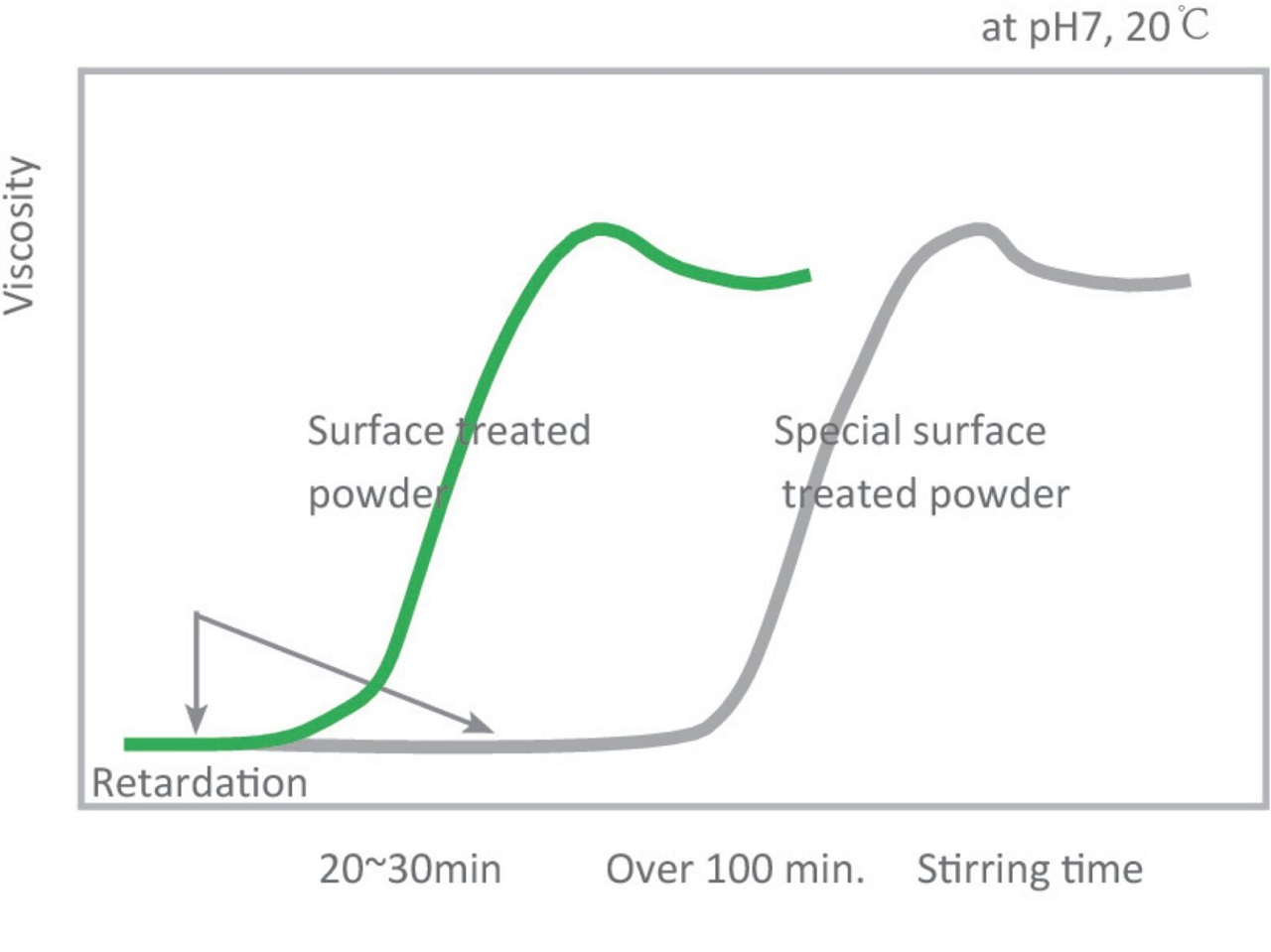
The effect of pH on MATECEL® dissolving times
The viscosity development time is dependent upon the pH of the solution fie surface-treated grades. The higher the pH of the solutions is, the shorter the retardation time will be. For paint applications, long-regarded grades are more suitable because of the high pH conditions (CaCO₃,ammonia,etc.) of the applications.
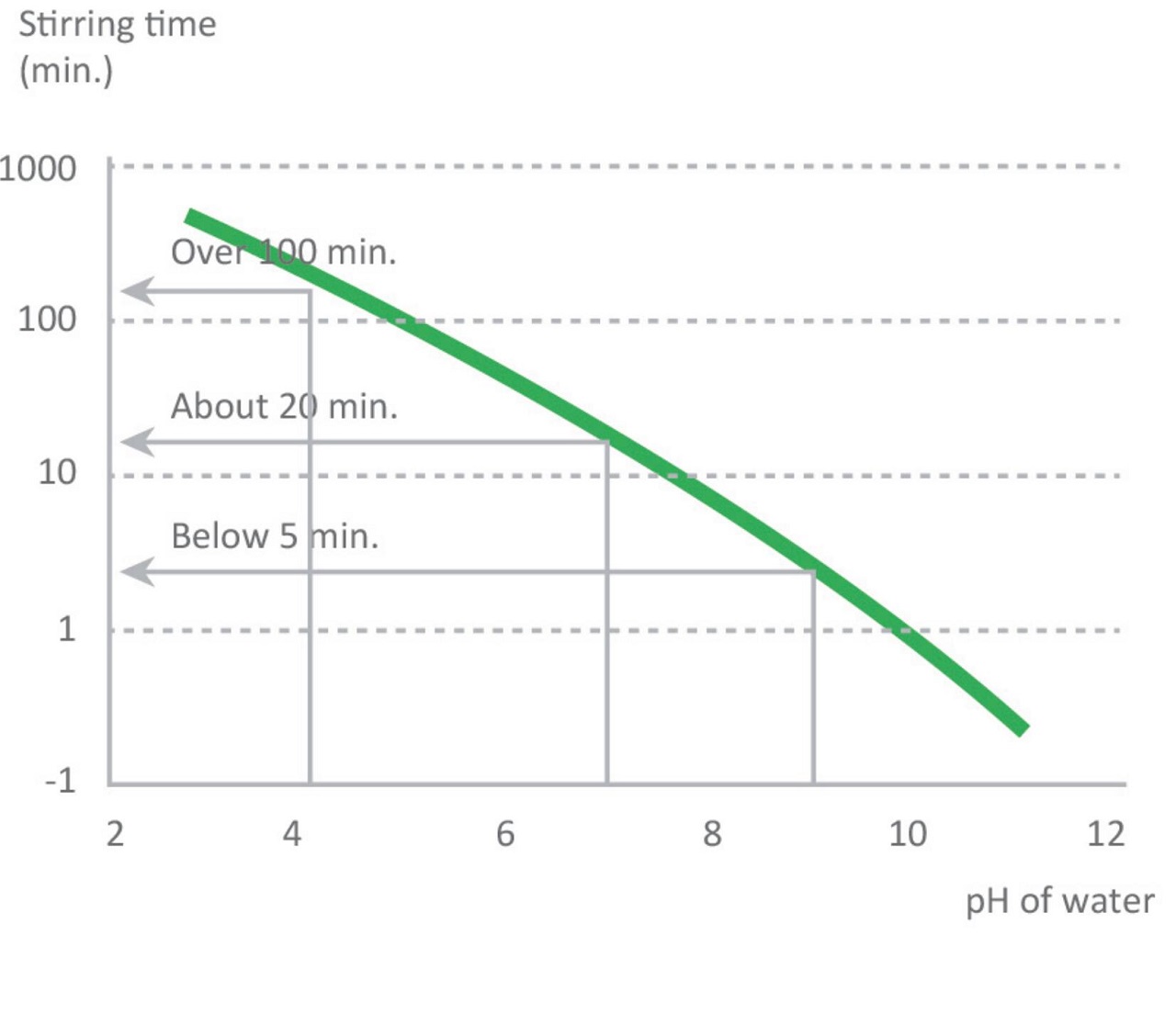
VISCOSITY
Viscosity comparison through various measurements
Viscosity is a resistance force (based on the flow rate, gravity force, rotation resistance of the product, etc.).
In general Hoppler (=Falling B) and Ubelode all types measure Newtonian solutions.

Note that measured values could vary with the types of NDJ viscometer
Relationship between viscosity and molecular weight
The viscosity of a solution is proportional to the weight or chain length of the MATECEL molecularAverage molecular weight of MATECEL varies from 400 to 200000.
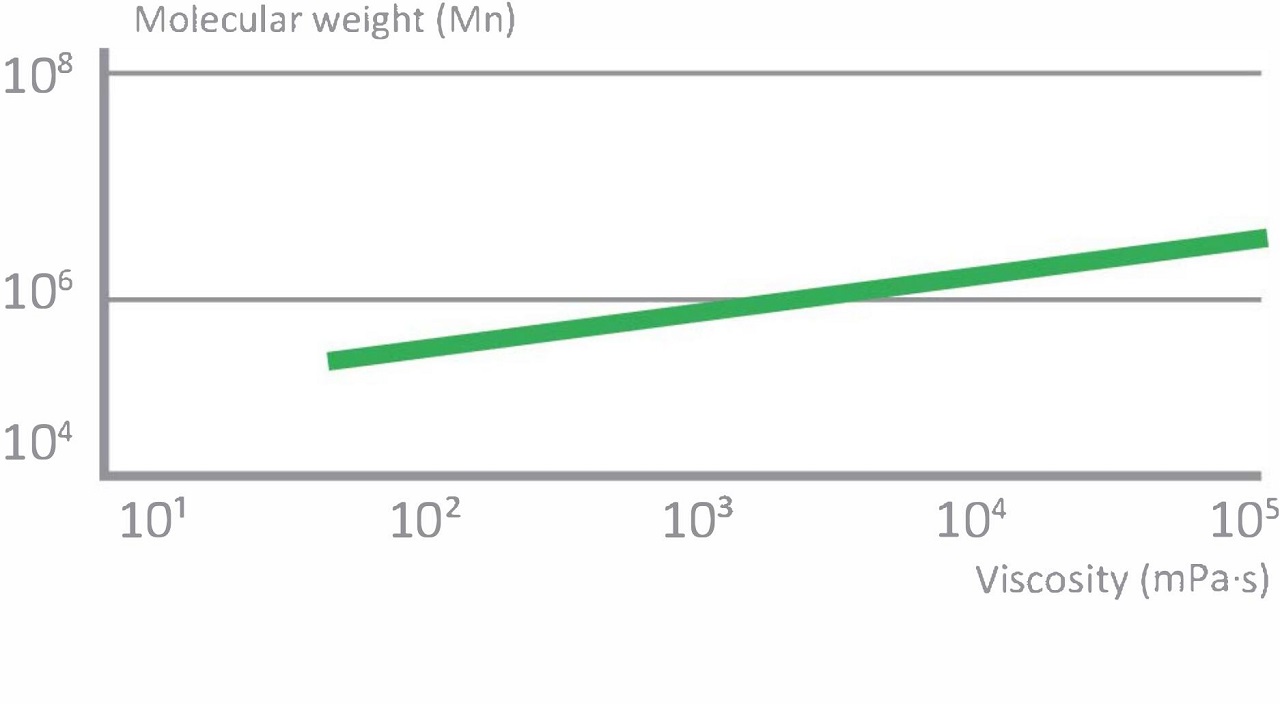
Relationship between viscosity and concentration
In general, viscosity is proportional to the concentration of the solution. Limited to about 2.5% for high viscosity grade.(over 50,000 mPas, 2% solution)
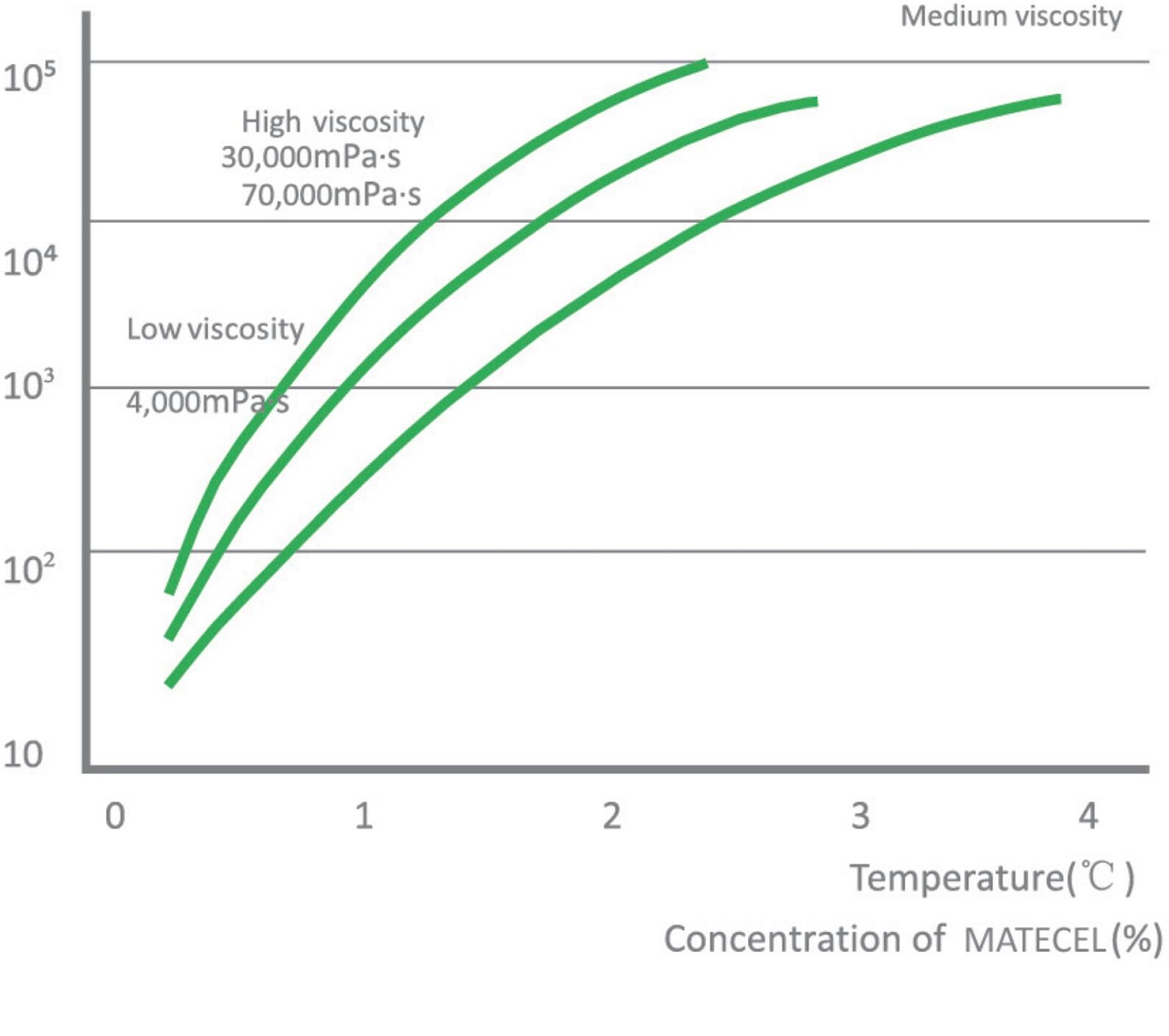
Relationship between viscosity and temperature
The viscosity of MATECEL solution depends on its temperature. As the temperature increases its viscosity gradually decreases when it reaches a certain temperature, the viscosity decreases sharply. The trend is shown in the dotted line. That certain temperature is called Gel-point.
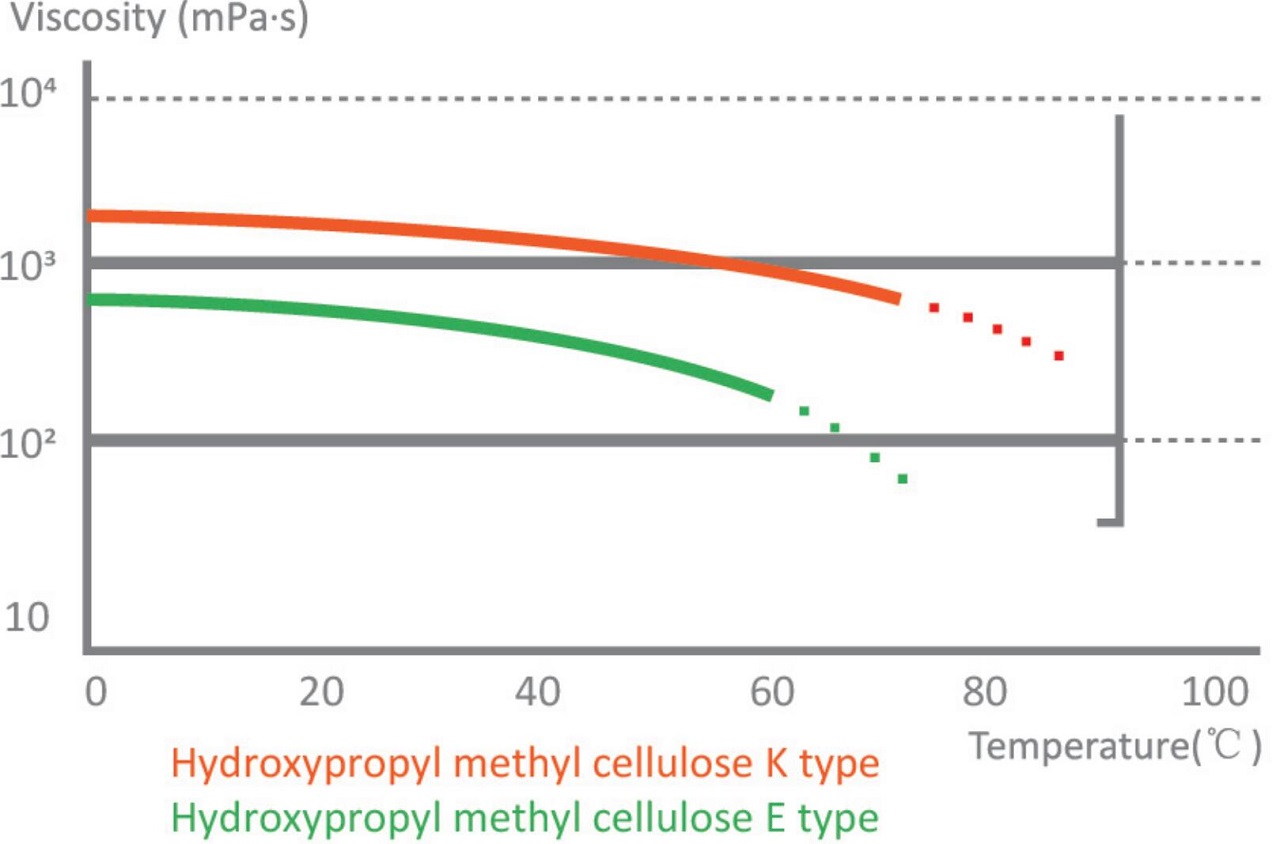
MAIN BENEFITS
Thickening effect
MATECEL® is used very often as a thickener in building applications as it prevents segregation and improves the cohesion of the formulation components.
The viscosity of MATECEL® depends on the degree of polymerization, contraction, temperature, shear rate, concentration of dissolved salts, and modification.
In dry mixing production and mortar, the thickening power of pure grades is related to their solution viscosity. On the other hand, the mortar viscosity of modified grades is not necessarily proportional to the solution viscosity.
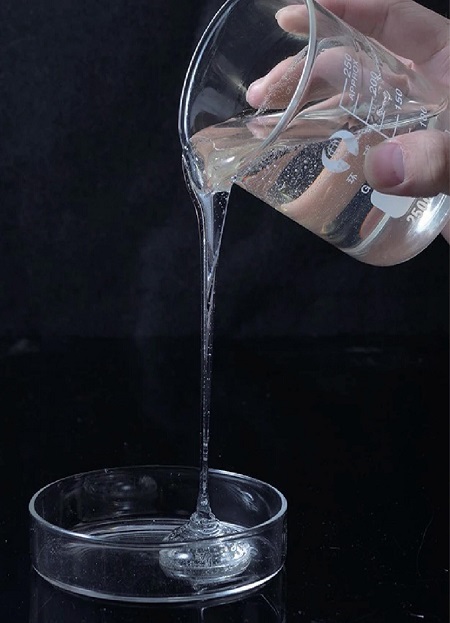
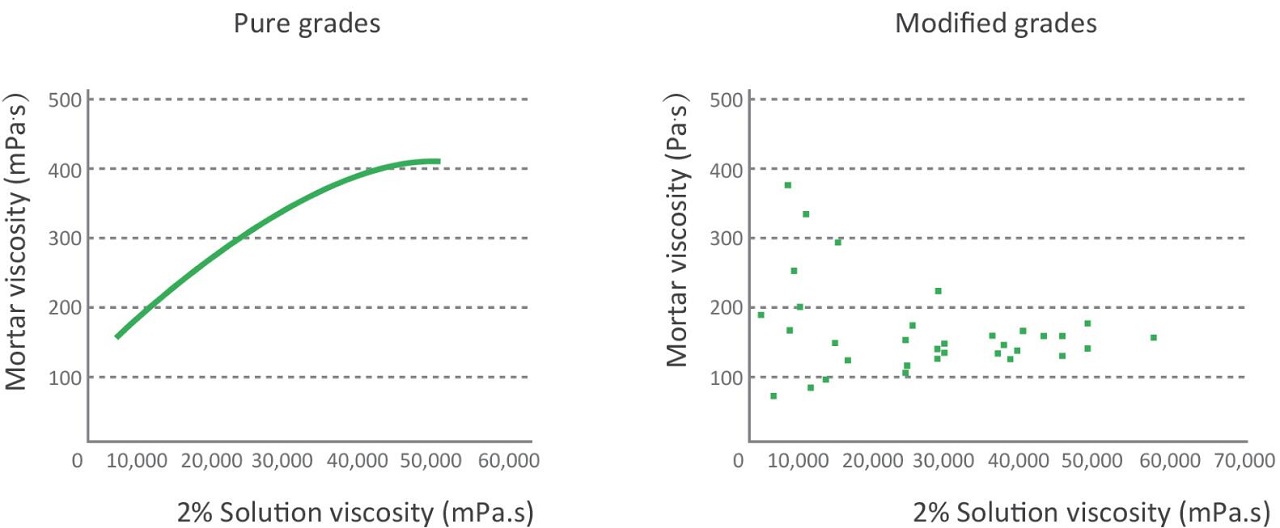
APPLICATION FIELDS
Tile Adhesives
MATECEL® promises the high performance and excellent working efficiencies for attachment of tiles to various substrates. Being slip resistance and having better open time is the key to better adhesive requirements.
These improvements can only be gained from MATECEL®.
Effects of raw materials
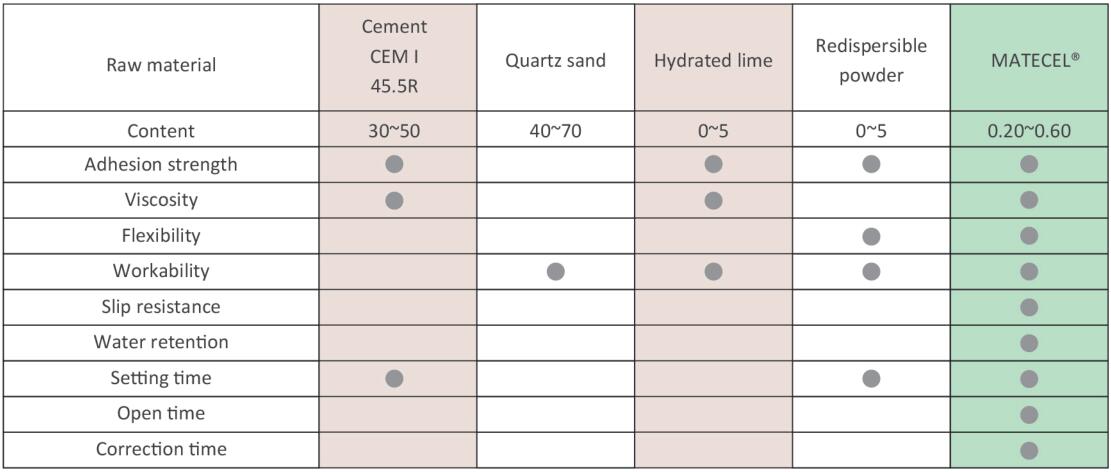
Shijiazhuang Henggu Jianxin Cellulose Co., Ltd.
Parque Químico de Reciclagem de Alta Tecnologia, Xincheng, Xinji, Hebei, China CEP: 052360
Copyright 2023 Shijiazhuang Henggu Jianxin Cellulose Co., Ltd. Todos os direitos reservados